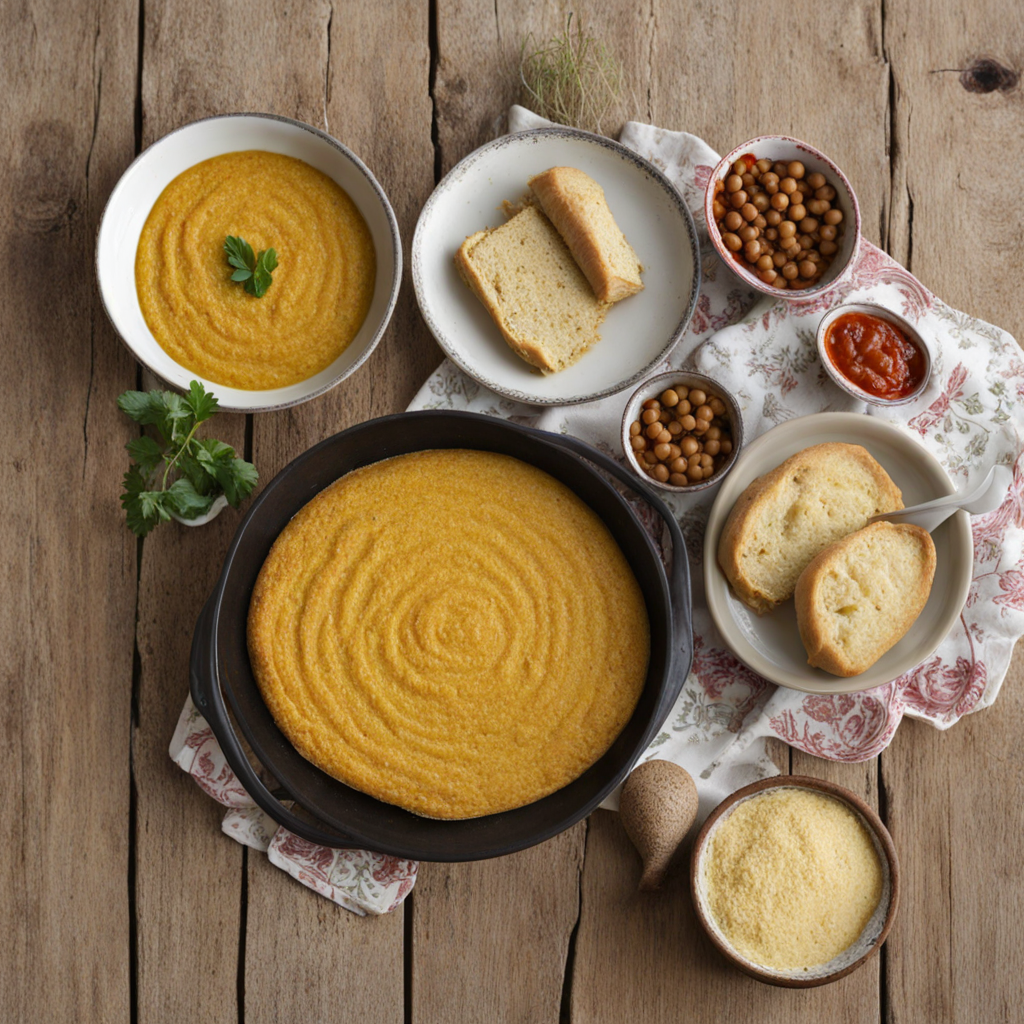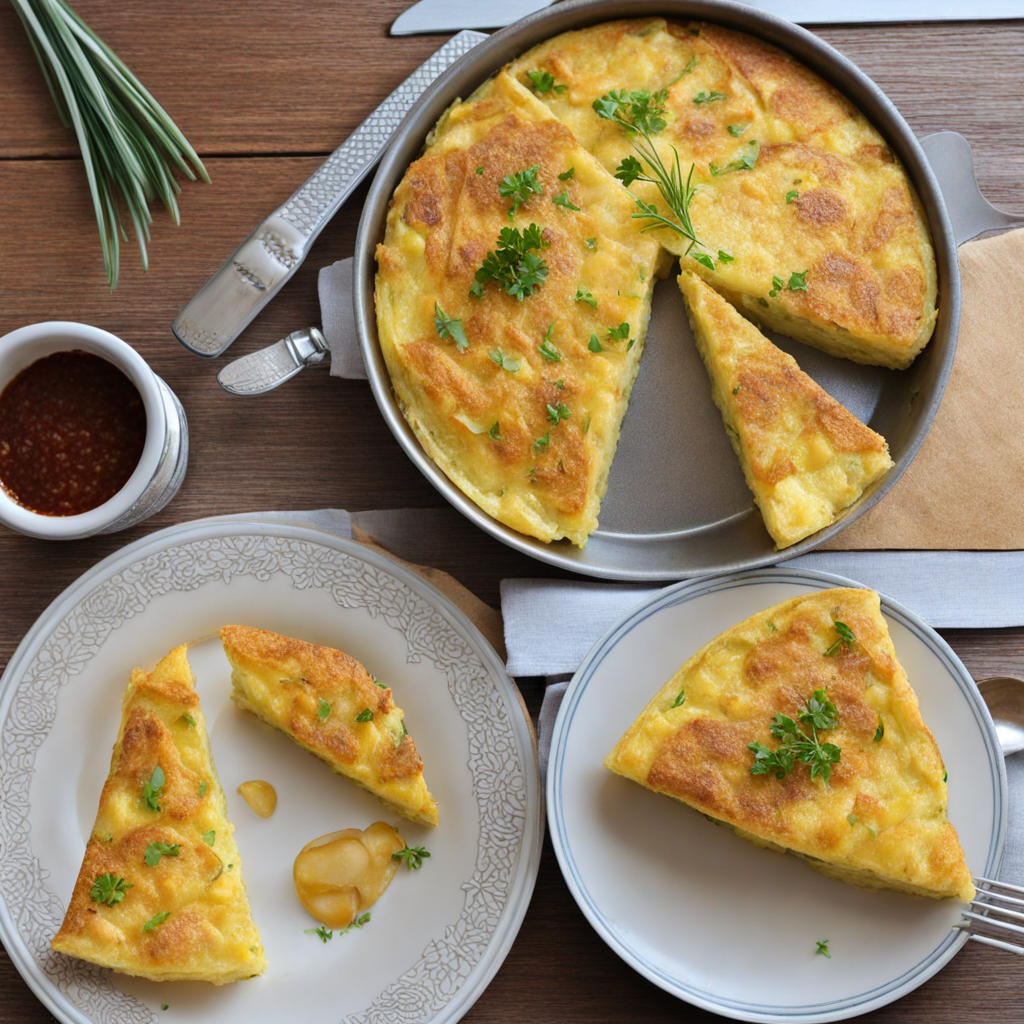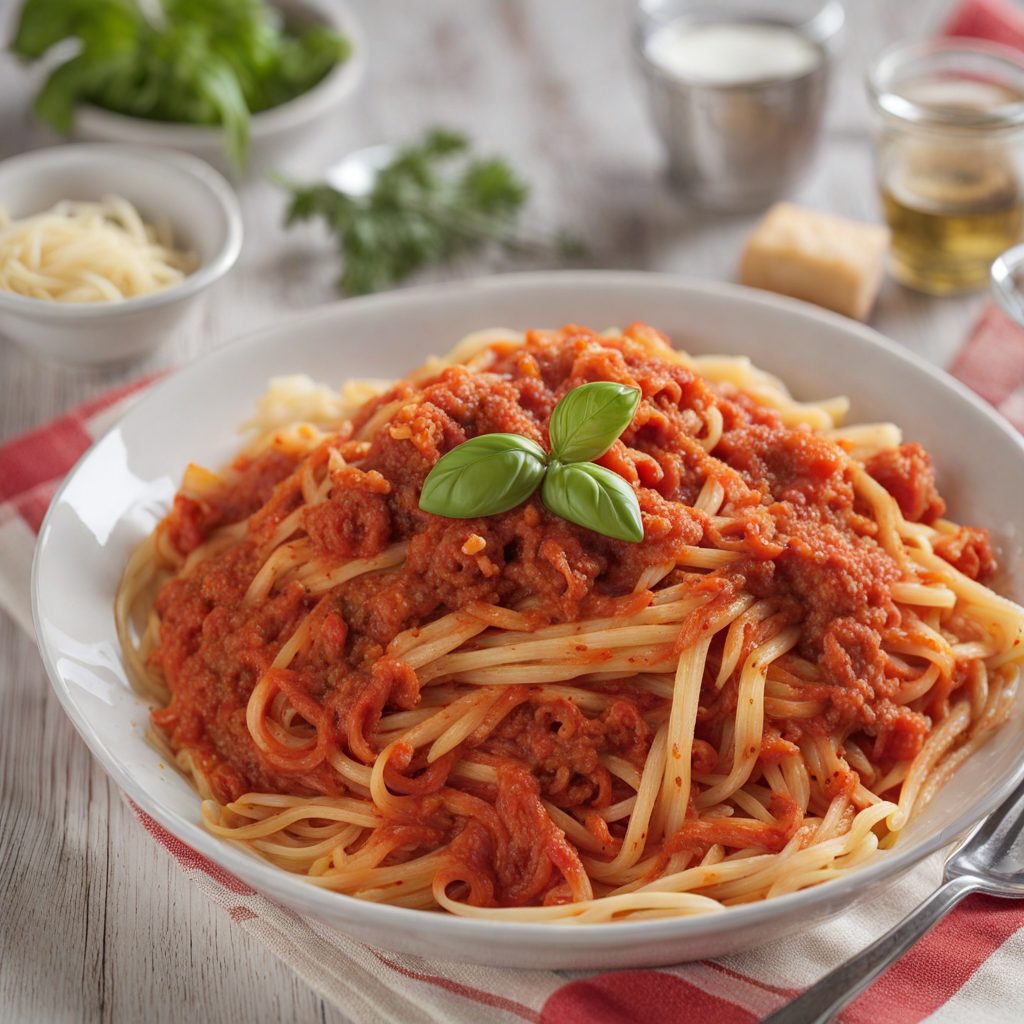Panissa
Panissa is a beloved traditional dish from Gibraltar that showcases the unique culinary influences of the region. Made primarily from chickpea flour, it is a delightful, savory treat that embodies the essence of Mediterranean flavors. The chickpea flour is mixed with water and seasoned with salt, then cooked into a thick batter that is later cut into small, rectangular pieces. This preparation results in a firm yet tender texture that is perfect for frying, giving the dish a crispy exterior while retaining a soft and flavorful interior. What sets Panissa apart is its versatility in serving options. Often enjoyed as a snack or appetizer, it can be served with a variety of accompaniments such as a drizzle of olive oil, tangy sauces, or fresh herbs for added flavor. The dish can also be paired with local favorites like a spicy salsa or served alongside grilled meats and vegetables, making it a delightful addition to any meal. Its simplicity allows the natural flavors of the chickpeas to shine through, making it a satisfying choice for those looking to experience authentic Gibraltarian cuisine. As you take your first bite of Panissa, you'll be greeted by a warm, comforting taste that is both hearty and wholesome. The subtle nuttiness of the chickpeas, combined with the aromatic herbs and spices often used in the preparation, creates a mouthwatering experience that is sure to leave you craving more. Whether enjoyed at a local eatery or made at home, Panissa offers a unique culinary adventure that invites you to savor the rich flavors and traditions of Gibraltar.
How It Became This Dish
The History of Panissa: A Culinary Gem from Gibraltar Nestled at the crossroads of the Mediterranean, Gibraltar is a small British Overseas Territory known for its strategic location and diverse cultural heritage. One of the lesser-known yet delightful aspects of Gibraltarian culture is its food, particularly a dish called panissa. This humble yet delicious dish has a rich history that reflects the diverse influences that have shaped Gibraltar and its people over the centuries. Origins of Panissa Panissa, also known as "panisse," traces its roots back to the culinary traditions of the Mediterranean region, with a particularly strong connection to the southern coasts of France and Italy. The dish is primarily made from chickpea flour, which is mixed with water and seasoned with salt, then cooked into a thick batter. This batter is poured into a mold, cooled until firm, and then cut into slices, which can be fried or baked. The origins of chickpea flour itself are ancient; chickpeas are one of the oldest cultivated legumes, believed to have been grown since around 7,000 BC in the Middle East. Over centuries, chickpeas spread throughout the Mediterranean, leading to their incorporation into various regional cuisines. In Gibraltar, the influence of Spanish and Italian culinary traditions is evident, as many of the settlers and migrants brought their own flavors and cooking methods to this unique enclave. Cultural Significance Panissa is more than just a dish; it is a symbol of the multicultural tapestry that defines Gibraltar. The Gibraltarians, often referred to as "Gibraltarians" or "Gibraltarian people," are a melting pot of cultures, heritage, and traditions. The significant Spanish, British, and Moroccan influences have all contributed to the culinary landscape of Gibraltar, making panissa a dish that embodies this rich heritage. In Gibraltarian households, panissa is often associated with communal gatherings and family meals. It is a popular choice for picnics and outdoor events, often served alongside a variety of dips and sauces, such as alioli or a spicy tomato salsa. The dish is not only a source of nourishment but also a means of bringing people together, fostering a sense of community and shared cultural identity. Development Over Time As Gibraltar evolved through various historical phases, so too did panissa. The 18th and 19th centuries marked a period of significant change for the territory, especially during the Great Siege of Gibraltar (1779-1783), when food scarcity led to innovation in local cooking. During this time, local cooks had to rely on available ingredients, and panissa emerged as a practical solution. Chickpea flour was plentiful and could be transformed into a filling dish that could sustain families through challenging times. In the 20th century, as Gibraltar developed into a thriving port city and a hub for international trade, the culinary scene began to diversify further. The influx of workers and migrants from various countries introduced new flavors and techniques to local cuisine. Panissa became a staple in local eateries, often found at street food stalls and markets, reflecting the growing appreciation for traditional Gibraltarian dishes among both locals and tourists. With the rise of tourism in the late 20th century, panissa gained recognition beyond the borders of Gibraltar. Visitors were drawn to the unique flavors and textures of the dish, leading to its inclusion in cookbooks and culinary festivals that celebrate Mediterranean cuisine. This exposure helped elevate panissa's status as a culinary emblem of Gibraltar, showcasing the territory's rich food heritage to a broader audience. Modern Interpretations In contemporary Gibraltar, panissa continues to be a beloved dish, enjoyed by locals and visitors alike. While the traditional preparation remains popular, modern chefs have begun to experiment with variations of the dish, incorporating different spices, herbs, and even fusion elements from other cuisines. For instance, some restaurants may serve panissa with Mediterranean dips, while others may infuse it with flavors inspired by North African or Middle Eastern cuisine. The dish has also found its way into the hearts and kitchens of younger generations, who are keen on preserving their culinary heritage while also embracing innovation. As the world becomes more aware of the importance of sustainable and local food practices, panissa stands out as a dish that is not only delicious but also made from simple, wholesome ingredients. Conclusion Panissa is a testament to Gibraltar's rich history and cultural diversity. From its origins rooted in ancient culinary traditions to its modern-day interpretations, the dish reflects the resilience and adaptability of the Gibraltarian people. Today, panissa serves as a reminder of the importance of community, heritage, and the simple pleasure of sharing a meal with loved ones. As Gibraltar continues to navigate the complexities of modern life, panissa remains a cherished symbol of its unique identity, encapsulating the flavors of the past while embracing the possibilities of the future. Whether enjoyed at a family gathering, a local festival, or a bustling street market, panissa continues to bring people together, nourishing both body and soul.
You may like
Discover local flavors from Gibraltar







